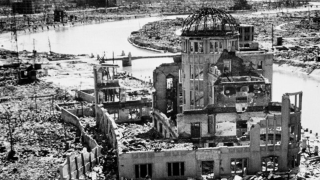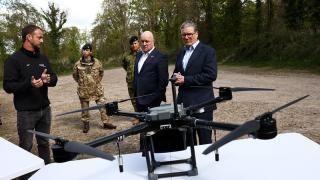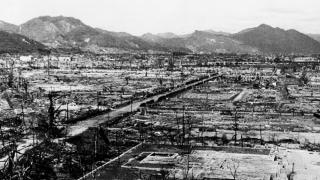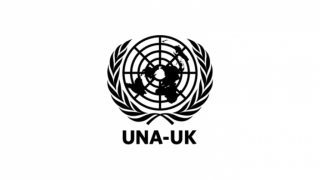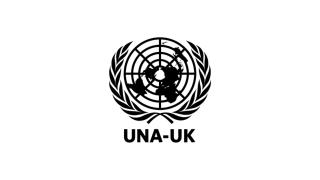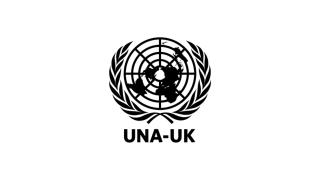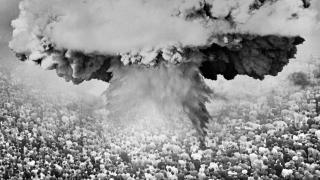
If nuclear deterrence works at all, particularly in the sense that it encourages a country to abstain from utilising a nuclear option, it must surely work best when there are two parties, or two solid alliances, that compose the warring dynamic. This is what some would say inhibited the Cold War from becoming something more vigorous. A multi-polar world—a world where antagonists are not immediately obvious or their opponents readily discernible, or where non-state actors play an increasingly significant role—is an uncertain place where we must learn to tread carefully. It is not easy to tread lightly in a world when nine states possess nuclear weapons, where there is a likelihood that other states will seek to develop such weapons, and where the possibility of non-state actors acquiring fissile material grows year on year. This is a sentiment shared in a 5th March op-ed in The Wall Street Journal co-authored by the US statesmen Henry Kissinger, Sam Nunn, William Perry and George Shultz, and in which they highlight the continuing dangers posed by the existence of nuclear weapons, dangers that “remain all too real”. Citing increasing uncertainty stemming from challenges such as frayed US-Russian diplomatic relations, North Korea, Iran’s unclear and obfuscatory nuclear ambitions, and the menace represented by possible nuclear terrorism, the so-called ‘Four Horsemen’ iterate that “global leaders owe it to their publics to reduce, and eventually to eliminate, these risks”. The statesmen emphasise four areas they see as key and requiring most urgent consideration by the Obama administration and by states in general: 1. Securing nuclear materials to prevent catastrophic nuclear terrorism: at the next Nuclear Security Summit, planned for 2014 in the Netherlands, world leaders should commit to develop a comprehensive global materials security system—including procedures for international assurances—to ensure that all weapons-usable nuclear materials are secure from unauthorized access and theft. 2. Changes in the deployment patterns of the two largest nuclear powers to increase decision time for leaders: the U.S. should work with nuclear-armed nations world-wide to remove all nuclear weapons from the prompt-launch status in which nuclear-armed ballistic missiles are deployed to be launched in minutes. 3. Actions following New Start [Strategic Arms Reduction Treaty]. Washington should carefully examine going below New Start levels of warheads and launchers, including the possibility of coordinated mutual actions. Such a course has the following prerequisites: a) strict reciprocity; b) demonstrable verification; and c) providing adequate and stable funding for the long-term investments required to maintain high confidence in our nuclear arsenal. Consolidating and reducing U.S. and Russian tactical nuclear weapons not covered under New Start should also be a high priority. 4. Verification and transparency: the U.S. should launch a "verification initiative" that involves the U.S. nuclear weapons laboratories and global scientific experts in developing essential technologies and innovations for reducing and controlling nuclear weapons and materials. The challenge faced by the preceding four points is substantial, with the politics surrounding, inter alia, the North Korean diplomatic stance, Iranian intentions and US-Russia seemingly insurmountable. Challenges yes, but not new ones, as Dr Randy Rydell, Senior Political Affairs Officer in the United Nations Office for Disarmament Affairs, intimates in Explaining Hammarskjöld's "Hardy Perennial: The Role of the United Nations in Nuclear Disarmament. The nuclear disarmament and non-proliferation background paper, written for UNA-UK, scrutinises the history of the UN machinery in addressing the global challenges relating to nuclear weapons – specifically, disarmament, non-proliferation, nuclear terrorism and the physical security of nuclear materials, drawing attention to the fundamental interaction of the UN and its member states: “…disarmament is not just the right thing to do. It also stands a greater prospect of working, relative to the alternatives of escalating arms races, indefinite increases in military spending, and the presumption that ‘nuclear deterrence’ can be maintained in a world with a growing number of states with nuclear weapons.” As with the four aforementioned statesmen, Dr Rydell emphasises that if we are to be successful in overcoming the global nuclear challenges of our age, we must tackle them collectively, and we must tackle them now. The UN must be at the heart of this - sentiment shared by Angela Kane, UN High Representative for Disarmament Affairs: Comment by Angela Kane, High Representative for Disarmament Affairs, United Nations 12 March 2013 Dag Hammarskjöld has always been remembered as a great Secretary-General of the United Nations. His historians, however, have allowed his pioneering achievements in other fields to eclipse his major contributions in the field of disarmament— in particular, nuclear disarmament. This gap in the literature has finally been filled by Randy Rydell’s paper, “Explaining Hammarskjöld’s ‘Hardy Perennial’”, prepared for the United Nations Association of the UK. It is surprising how relevant Hammarskjöld’s views remain on contemporary disarmament issues—including the relationship between peace and disarmament … the respective roles of the UN disarmament machinery and the Member States … the promise and pitfalls of a so-called “step-by-step” process of disarmament … and the merits of technical approaches to disarmament. I am proud that the statements and initiatives of Secretary-General Ban Ki-moon indicate clearly that this “hardy perennial” at the United Nations is not only a significant part of the work of this Organization—it has also become part of its institutional identity. It is an even more important priority today, as more than half of humanity now lives in countries that either have nuclear weapons or belong to alliances that rely on nuclear deterrence. In such a world, the views of Hammarskjöld are indeed worth remembering. I salute the United Nations Association of the UK for recognizing this and for including this paper in its series on disarmament and non-proliferation issues. For more information on UNA-UK’s Towards Zero programme, contact James Kearney, UNA-UK Peace and Security Programmes Manager, at kearney@una.org.uk or on 020 7766 3446.

